All About Camellias
Camellias are popular shrubs that have been adored in southern gardens for decades. It is hard to exclude a plant from the garden that has rich, glossy green foliage, is easy to grow, and flowers at a goofy time of year. Trees and shrubs that display their floral colors in the fall and winter add a splash of diversity to the otherwise bland winter landscape. That is exactly when camellias shine in the garden.
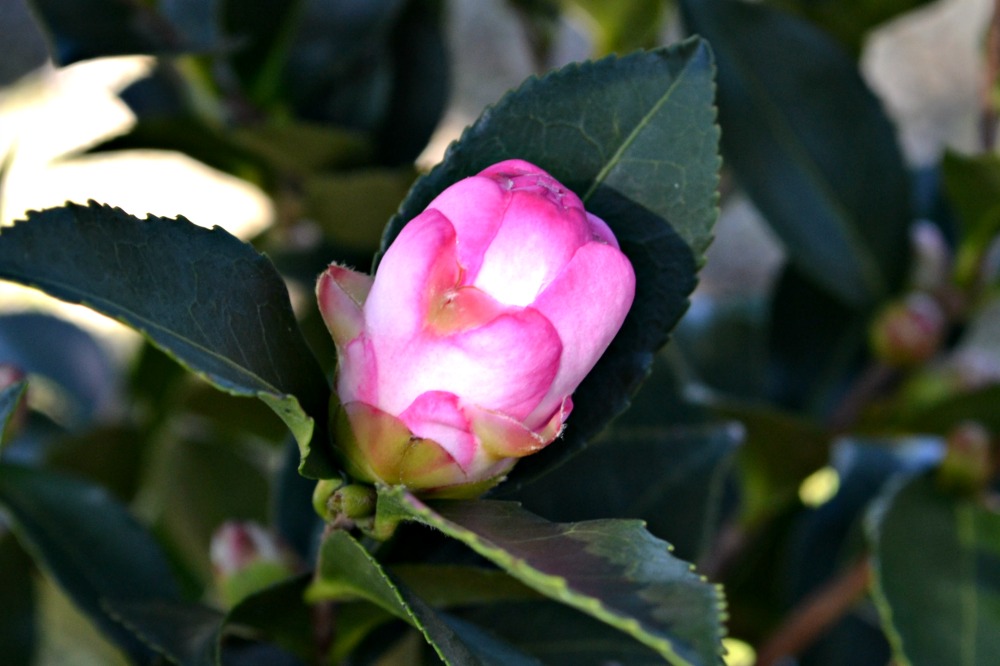
Camellias can be confusing to differentiate due to the availability of several different species and thousands of different cultivars. The most common forms found are Camellia japonica (Japanese camellia), Camellia sasanqua (Sasanqua camellia), Camellia sinensis (Tea Camellia), and hybrids of these species. The flowering period of these species occurs in the fall and winter months from October through winter and sometimes lasting into April.
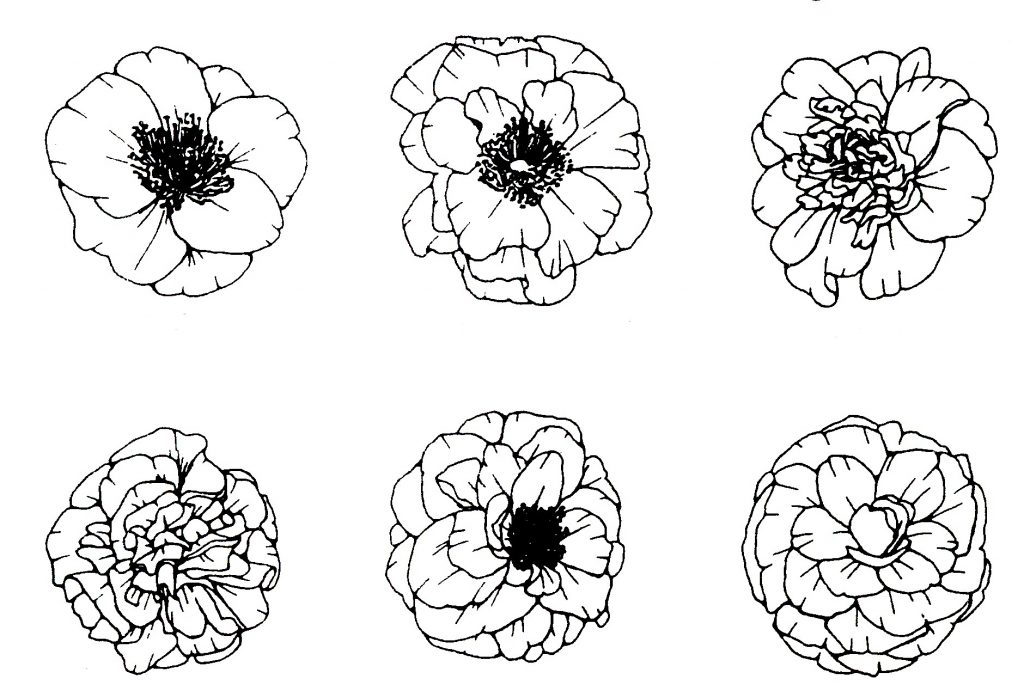
Camellia japonica
Camellia japonica is the largest in size of the group with the ability to reach heights of over fifteen feet and widths of six to eight feet. This species also has larger leaves when compared to the Sasanquas and Tea Camellias. The flowers can be as large as six inches across in shades of red, pink, yellow, and white. There are also variegated (both foliage and flower) forms available.
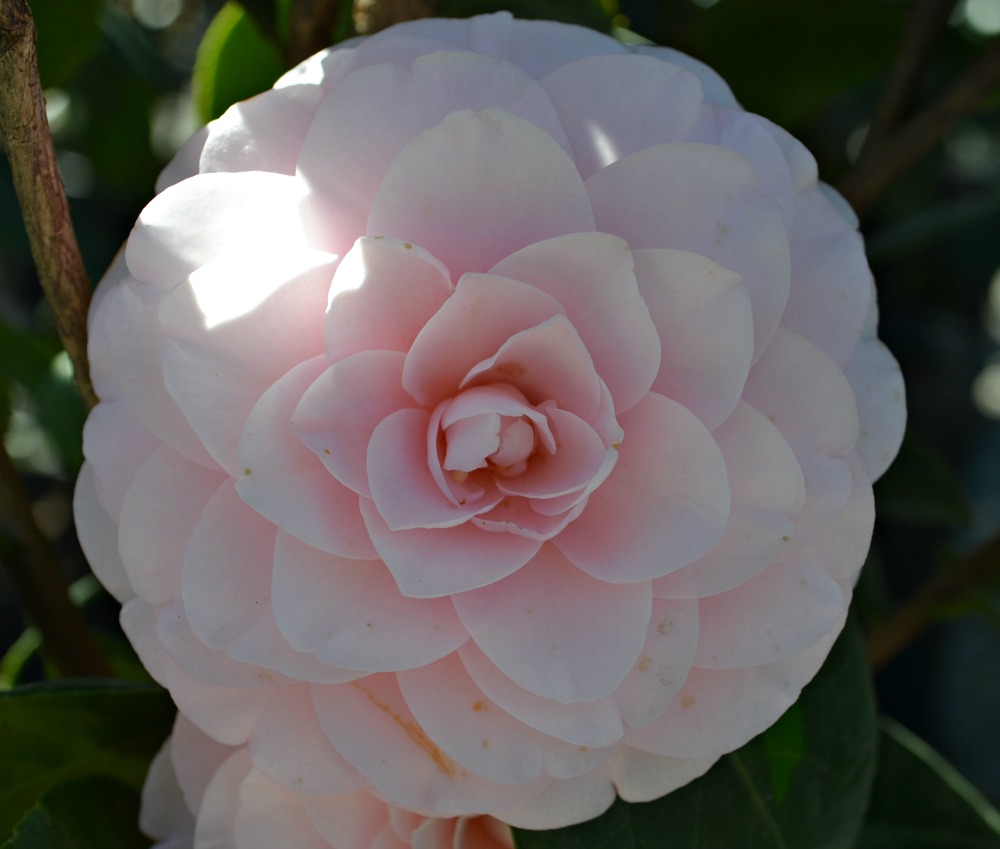
Flower forms are quite variable including single, semi-double, anemone, peony, rose form, and formal double forms. Japanese camellias can begin flowering as early as January and bloom through April depending on cultivar. Some popular forms of the Japanese camellia are:
| Camellia japonica (Blooms in winter or early spring) | ||||
| Cultivar | Height | Width | Bloom Color | Bloom Type |
| Ack-Scent | 8-15′ | 4-8′ | Pink | Peony |
| April Kiss | 8-12′ | 4-5′ | Pinkish red | Peony |
| April Remembered | 6-8′ | 4-5′ | Pink | Semi Double |
| April Tryst | 6-8′ | 4-5′ | red | Anemone |
| Arctic Dawn | 8′ | 4′ | Coral Pink | Peony |
| Buttons & Bows | 8-10′ | 4-6′ | Pale Pink | Semi Double |
| Goggy | 10-12′ | 6-8′ | Pale Pink | Semi Double |
| Greensboro Red | 10-12′ | 7-8′ | Red | Semi Double |
| Lady Vansittart | 6-8′ | 4-6′ | White/Light Pink | Semi Double |
| Nuccio’s Gem | 6-8′ | 6-8′ | White | Double |
| Pink Perfection | 8-10′ | 6-8′ | Pale Pink | Double |
| Professor Sargent | 6-10′ | 4-8′ | Dark Red | Peony |
| White by the Gate | 10-12′ | 6-8′ | White | Double |
Camellia sasanqua
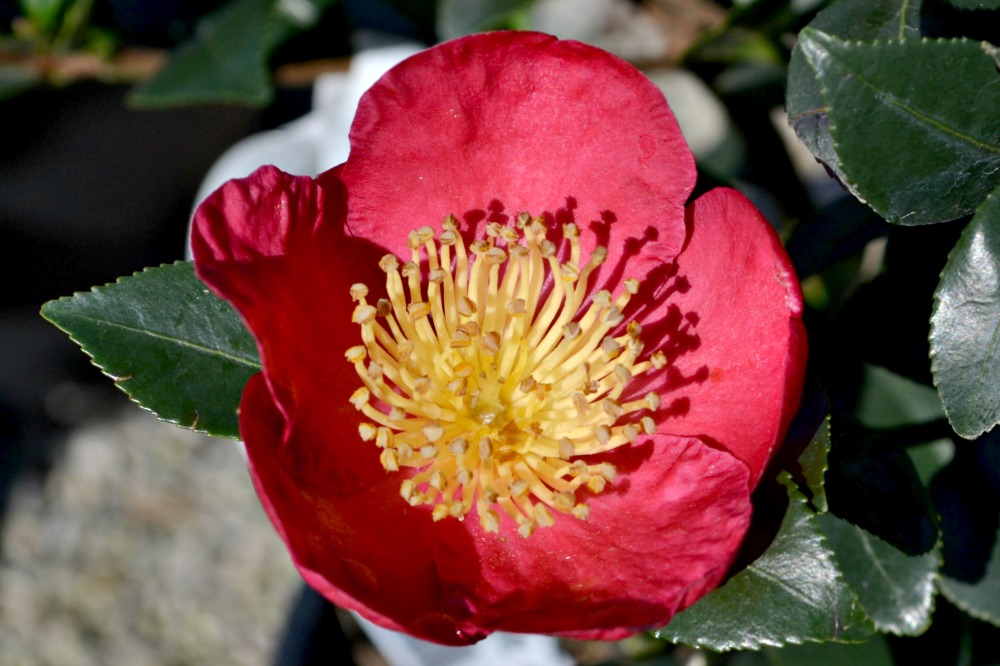
Camellia sasanqua is somewhat smaller than the Japanese Camellia, usually maxing out at around eight feet in height. The leaves are a darker, glossy green, and somewhat smaller in size. Like the foliage, Sasanqua Camellia flowers are smaller than those of the Japonicas, with most flowers reaching three to four inches in width.
The flowering season for sasanquas usually begins in October and lasts through December or January. Popular cultivars of Camellia sasanqua include:
| Camellia sasanqua (Blooms in fall or early winter) | ||||
| Cultivar | Height | Width | Bloom Color | Bloom Type |
| Agnes O. Solomon | 15′ | 6′ | Soft Pink | Semi-Double |
| Bonanza | 4-5′ | 6′ | Deep Red | Peony |
| Hana Jiman | 6-10′ | 4-6′ | White with Pink | Semi-Double |
| Hot Flash | 4-5′ | 6-8′ | Red-rose | Peony |
| Kanjiro | 8-10′ | 8-10′ | Cherry Pink | Semi-Double |
| Leslie Ann | 10′ | 6-8′ | White w/ Pink Edge | Semi-Double |
| Mine-No-Yuki | 4-5′ | 4-5′ | White | Double |
| October Magic Bride | 4-6′ | 4-6′ | White | Small Double |
| October Magic Inspiration | 6-8′ | 4-5′ | Bicolor white & magenta | Double |
| October Magic Orchid | 4-6′ | 4-5′ | White to blush | Semi-Double |
| October Magic Rose | 6-8′ | 3-4′ | Rosy Salmon | Double |
| October Magic Snow | 5-7′ | 5-6′ | White | Frilled Double |
| Redbird | 12′ | 8′ | Fuschsia | Semi-Double |
| Setsugekka | 15′ | 8-10′ | White | Semi-Double |
| Shishi Gashira | 4-5′ | 6-8′ | Rosy Pink | Semi-Double |
| Survivor | 6-8′ | 5′ | White | Large Single |
| Yuletide | 8-10′ | 8-10′ | Brilliant Red | Single |
| Winter’s Snowman | 10-12′ | 4-5′ | White | Large Anemone |
Camellia sinensis
Tea camellia has a story beyond its flowering ability. Have you ever had green tea? If so, you have had tea camellia. Green tea is derived from the dried leaves of Camellia sinensis. Tea camellia is very similar to the sasanquas in that they are smaller in stature and have smaller flowers. The flowers themselves are cup shaped and can be seen in the fall months blooming pink or white.
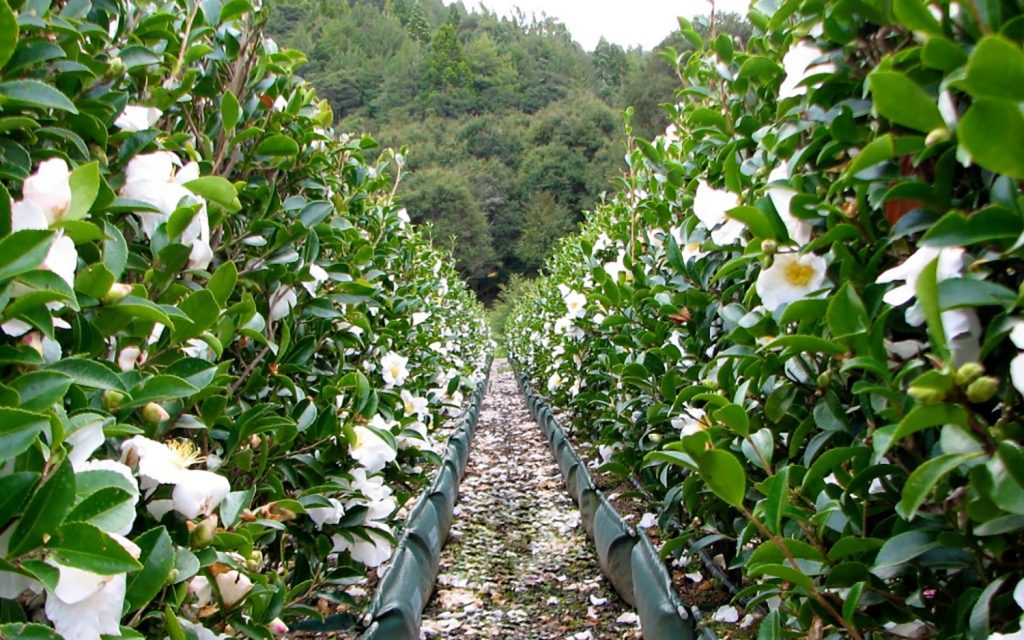
Regardless of the cultivar or species, camellias prefer partly shady areas with good drainage and low soil pH. Filtered shade under pine trees seems to be the perfect exposure for these plants. Dense shade can hinder flowering ability and full sun can discolor the handsome foliage. Much like azaleas and rhododendrons, camellias do not like wet soils. Good drainage is a must for healthy plants. Camellias also prefer a low soil pH which is fairly typical in North Carolina. A soil test by the NCDA can specify your soil pH and recommend amendments or additives to move pH in one direction or the other. These soil tests are free and can provide great insight into your soil for healthier trees, shrubs, annuals, perennials, and turf grasses.

Camellias are easy plants to care for if they are planted and established properly. Any pruning should be completed after flowering has occurred, preferably in late winter or early spring. Holly tone is a great organic slow-release fertilizer that can be applied in early March to give camellias a nutritional boost. Camellia flower blight is a disease that can be detrimental to the flowers of the shrub. To prevent this disease, spent flowers and foliage should be routinely cleaned out from under the plant. Removing old flowers and foliage will prevent fungal spores from reproducing and keep camellias cleaner, and healthier. Fresh layers of mulch will also help prevent flower blight as well as insulate the root system during winter.

Camellias can be planted as specimens, accents, or even as a screening border in shady areas. Sasanqua and tea camellias are easily trained, and look incredible as espaliers along vertical surfaces like walls or fences. Many believe that camellias are just large, evergreen, flowering shrubs. Do not fall into this trap. Camellias are incredibly variable in size and habit ranging from dwarf, dense plants, to large loose forms. However you would prefer to use one, make sure to add a camellia to your garden to brighten the winter landscape.
Happy Planting!
Brad Rollins




